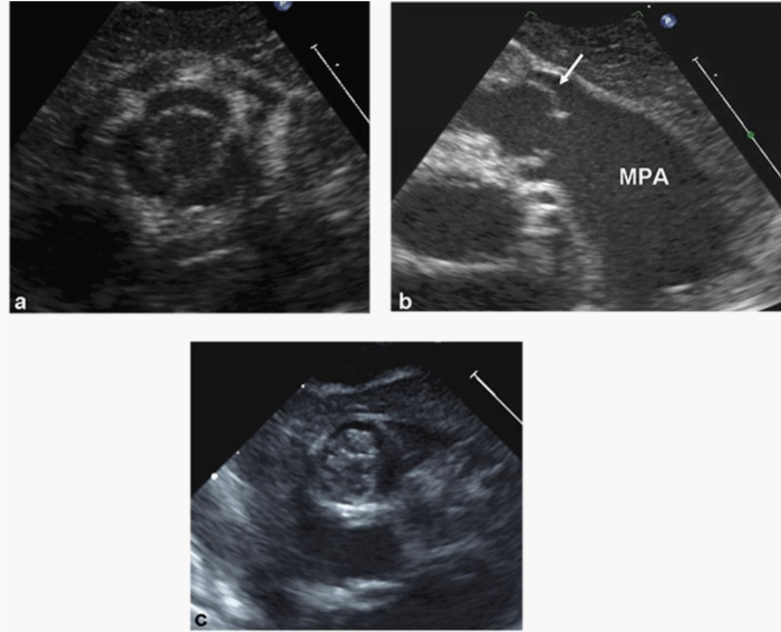
Pulmonary valve anatomy leading to stenosis can be due to fusion, or partial fusion of the valve commissures (2a), or from a dysplastic valve (2c). When the commissures are fused, there is restricted motion of the valve during systole can lead to incomplete opening and a “dome” shaped valve (2b, arrow) and frequently there is post-stenotic dilation of the main pulmonary artery (MPA). Dysplastic pulmonary valves have markedly thickened cups with disorganized myxomatous tissue without significant fusion (2c). Images from the University Of Minnesota Amplatz Children’s Hospital